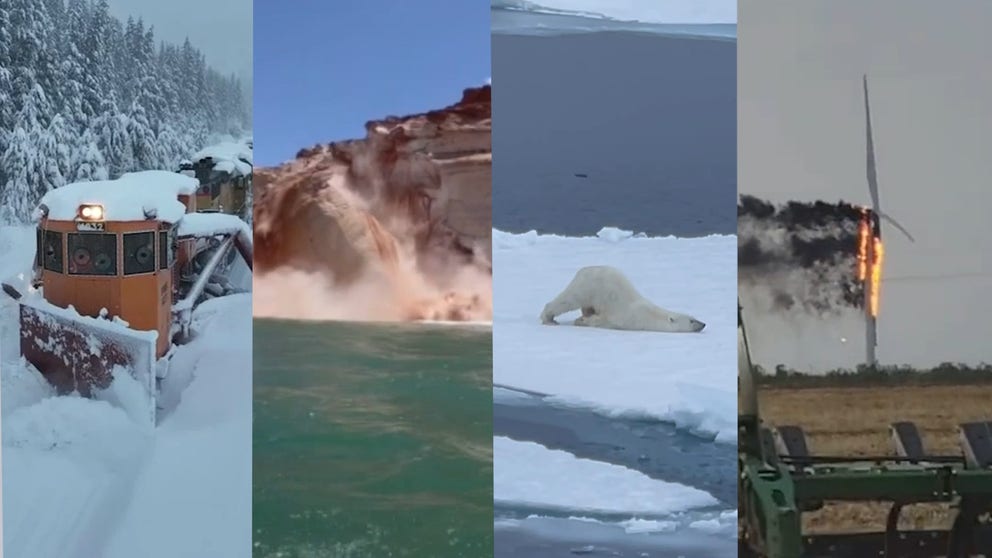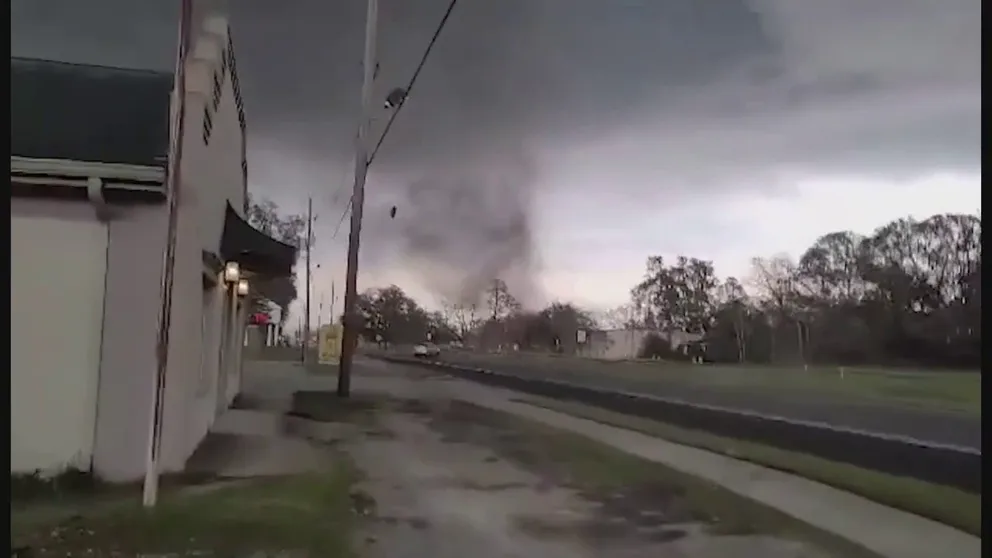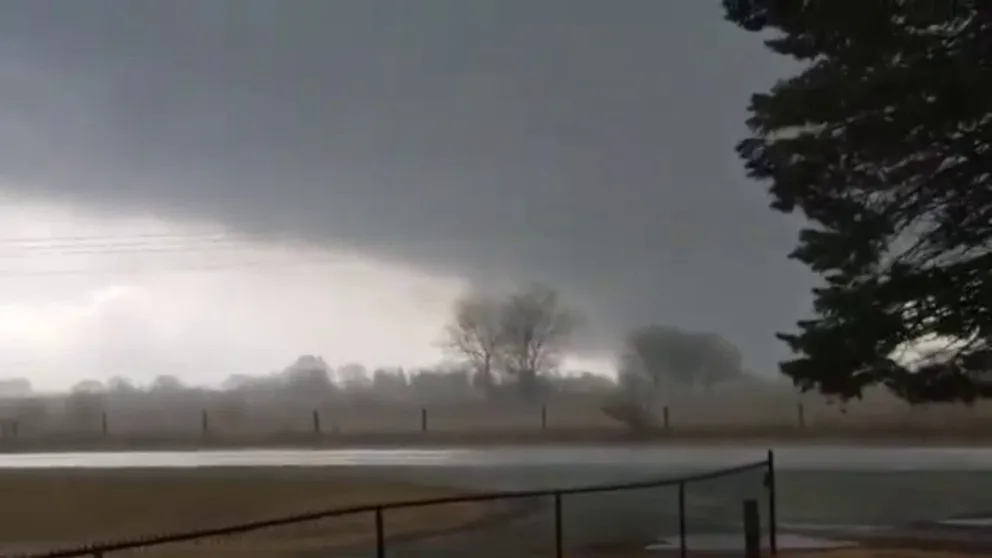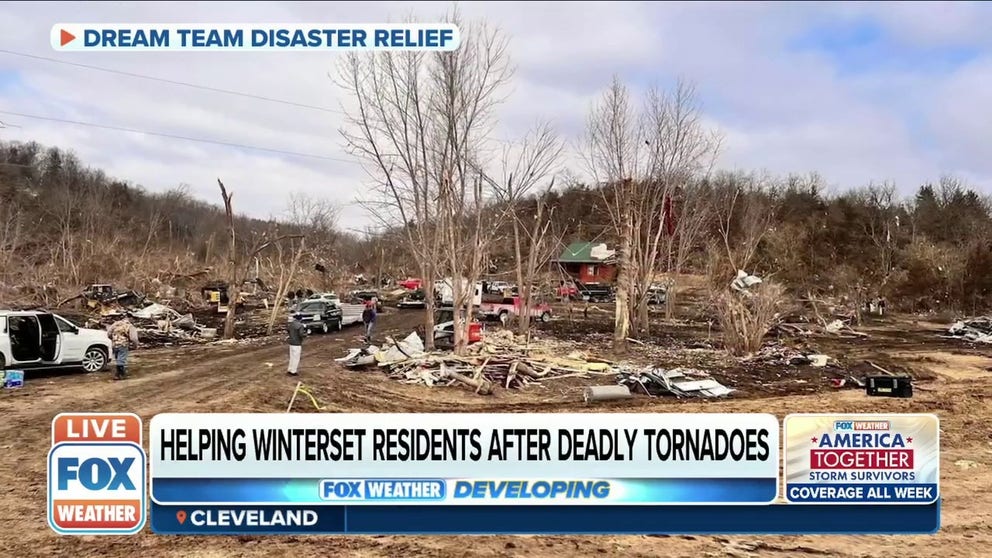Tornadoes of 2022: Year ends with below-average activity
La Niña weather patterns typically produce higher counts of tornadoes, but an inactive late spring and summer caused the tornado season to be quieter than average.
7 of the best extreme weather viral videos of 2022
From earthquakes to lightning strikes, here are some of the best extreme weather moments captured on camera in 2022.
The 2022 tornado season will be remembered for an active spring, but a glance at the year as a whole shows the final tally finished below what a typical year usually produces.
During 2022, two of three major severe weather indices came in below average, with the tornado count about five percent below the running mean and hail reports nearly 30 percent off from what is considered normal.
A look back at National Oceanic and Atmospheric Administration records showed an average start to the year picked up drastically in the spring, setting records for amounts of tornadoes, but the activity came to nearly a screeching halt during the late spring and summer.
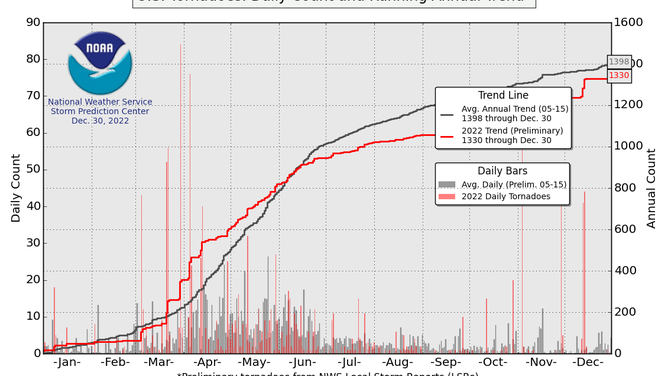
2022 preliminary tornado count
(Storm Prediction Center / FOX Weather)
The number of reported twisters was significantly below the running average for May, July and August, which briefly sent the yearly count into the 25th percentile of least active years on record.
By December 31, there were 1,330 preliminary reports of tornadoes, with more than 1,100 confirmed by National Weather Service meteorologists.
The average annual preliminary tally of tornadoes is around 1,400, a figure that has not been topped since 2019.
IT’S NOT YOUR GRANDPARENTS’ TORNADO ALLEY ANYMORE
The quieter than typical year didn’t prevent NWS offices from issuing Tornado Warnings - more than 2,300 were issued across the lower 48.
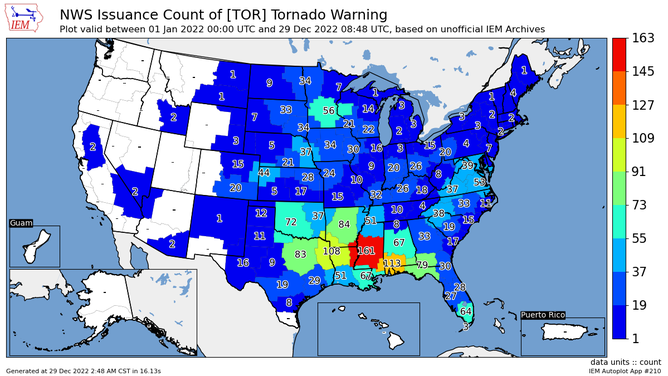
2022 Tornado Warnings by National Weather Service Office.
(Iowa State University / FOX Weather)
Offices in Jackson, Mississippi; Mobile, Alabama; Shreveport, Louisiana; Little Rock, Arkansas; and Dallas-Fort Worth topped the list for issuing the most warnings.
Many of the active regions were in the South, where meteorologists and climatologists say there has been a clear trend away from seeing tornadoes in the classic tornado alley and towards a more eastern hot zone.
Many of the tornadoes that formed during 2022 were rated from EF-0 to EF-4 on the Enhanced Fujita Scale, but none reached the rare status of an EF-5, with a wind speed of more than 200 mph.
HOW ARE TORNADOES RATED? THE ENHANCED FUJITA SCALE EXPLAINED
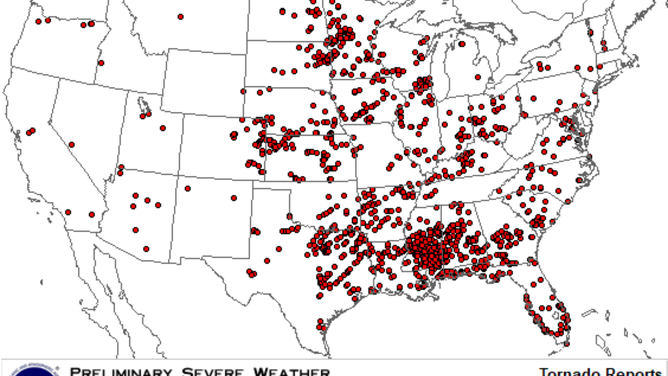
Tornado reports form 2022
(Storm Prediction Center / FOX Weather)
Strongest tornado of 2022
The strongest twister of the year occurred in April outside of Savannah and was ranked an EF-4, with winds estimated around 185 mph.
The tornado formed during a multi-day severe weather outlook that began in Texas and worked its way through the Eastern Seaboard.
The outbreak produced at least 89 tornadoes, including the strong tornado that tore through Bryan County, Georgia.
NWS meteorologists said the tornado was three-fourths of a mile wide and was on the ground for about 14 miles.
Deadly tornado touches down in Pembroke, GA
Video captures a deadly tornado touching down in Pembroke, GA on Tuesday, April 5.
One death and 12 injuries were attributed to the tornado, which ranks among the strongest ever to impact the Peach State.
The twister’s winds were estimated to be about 15 mph shy of reaching EF-5 status.
An EF-5 tornado has never been documented in Georgia or nearby North Carolina, South Carolina or Florida.
The lack of seeing these incredible tornadoes continues a streak that began after EF-5 leveled parts of the town of Moore, Oklahoma, on May 20, 2013.
The tornado had estimated winds of 210 mph and maintains the record of being the last EF-5 tornado to impact the country.
TWISTERS CAUGHT IN ACTION: 7 VIDEOS TOO CLOSE FOR COMFORT
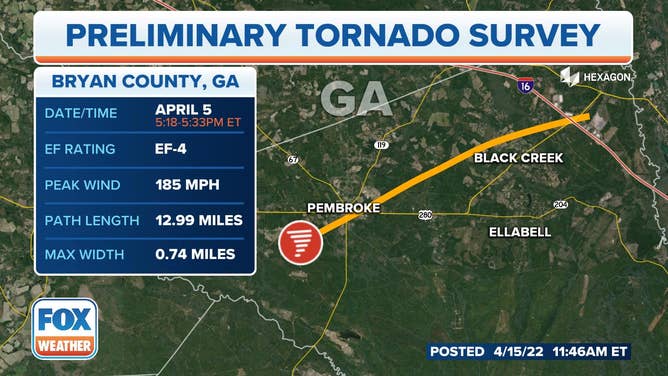
Preliminary rating for the April 5 tornado in Pembroke, Georgia.
(FOX Weather)
Largest tornado outbreak of 2022
A storm system that moved through the country in late March produced 90 tornadoes from the Plains to the Northeast and was the largest outbreak of the year.
The combination of shear, plenty of moisture and a deepening storm system ignited storms on March 29, which caused thousands of power outages and an estimated $1.3 billion in damage.
Three deaths and nearly two dozen injuries were tied to the severe weather outbreak.
NWS surveys concluded that three of the tornadoes reached EF-3 status with winds that topped 136 mph.
BUSY TORNADO SEASON SETS RECORD WITH NEARLY 250 TWISTER REPORTS IN MARCH ALONE
Deadliest tornado of 2022
Destructive tornado southwest of Winterset, IA
The National Weather Service said they expect the tornado to be rated at least an EF-3
The worst tornado of the year devastated communities southwest of Des Moines on March 5, 2022.
A violent, long-tracked EF4 formed near Winterset, Iowa and stayed on the ground for nearly 70 miles through the Hawkeye State before weakening and lifting.
Six people were reported killed, making the twister one of the deadliest to strike the state in more than a decade.
The tornado was one of 32 that formed during a multi-day severe weather outbreak that impacted the Midwest and Southeast.
The Winterset event marked the 88th twister rated EF-4 or higher in Iowa since 1950.
‘WE STARTED HEARING SOUND THAT WASN’T NORMAL’: SURVIVORS RECOUNT DEADLY EF-4 TORNADO
Winterset, IA volunteer on helping residents after deadly tornado
Jacob Rowley of Dream Team Disaster Relief on helping Winterset residents recover following a deadly tornado that moved through Iowa Saturday.
What 2023 has in store
The end of a rare triple-dip La Niña could occur as early as spring, leading to weather changes around the globe, including whether the atmosphere will be primed for tornadoes.
As the Pacific Ocean transitions from its current state and tries to head towards an El Niño, the weather ingredients tend to be less conducive for severe weather outbreaks.
Meteorological spring, which consists of the months of March, April and May, is typically the busiest period for severe weather as the jet stream allows plenty of warm moisture to stream northward and aid in the instability needed for thunderstorms.
Some storms can take advantage of the ripe conditions and become violent supercells with tornadoes.
Research completed by various private, government and educational groups has found that neutral-ENSO conditions and El Niños tend to produce tornado and hail events that are more in line with average or even below long-term counts.
Experts caution there is tremendous variability with climate patterns and not all neutral, La Niña or El Niño events follow historical trends.
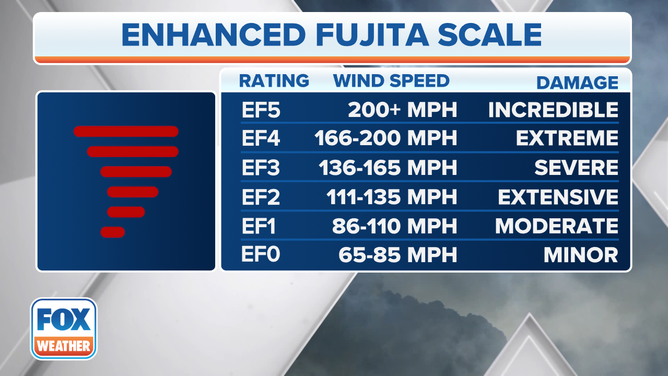
A tornado is assigned a rating from 0 to 5 on the Enhanced Fujita Scale to estimate its intensity in terms of damage and destruction caused along the twister’s path.
(FOX Weather)
